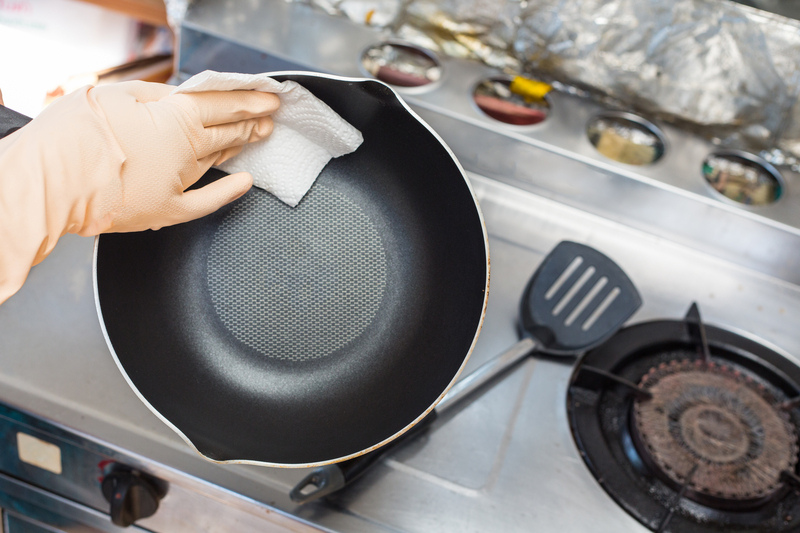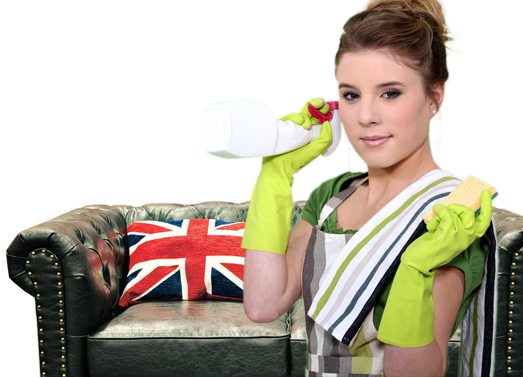Turn Your Bathroom into a Mold-Free Haven
Posted on 04/06/2025
Turn Your Bathroom into a Mold-Free Haven: The Complete Guide
Does your bathroom struggle with persistent mold? If so, you're not alone. Mold infestations are a common headache for homeowners, renters, and landlords alike. Left unchecked, this sneaky fungus can damage your bathroom surfaces, compromise air quality, and cause health concerns. Thankfully, with the right approach, you can transform your bathroom into a mold-free haven that's clean, safe, and a pleasure to use.
This comprehensive guide will walk you through the causes, prevention techniques, and effective mold removal strategies. If your goal is a perpetually mold-free bathroom oasis, read on!
Understanding Mold in the Bathroom
What is Mold and Why Does it Grow in Bathrooms?
Mold is a type of fungus that thrives in damp, warm environments. Bathrooms offer the perfect storm: high humidity, frequent water exposure, limited ventilation, and often organic matter like soap residue or skin cells. Species such as Aspergillus, Penicillium, and the infamous black mold (Stachybotrys chartarum) can colonize tiles, grout, ceilings, shower curtains, and even paint.
Common reasons mold proliferates in bathrooms:
- Insufficient ventilation and air circulation
- Poor cleaning routines or missed spots (behind toilets, under sinks, etc.)
- Persistent moisture from leaky faucets, pipes, or shower enclosures
- Damp items like towels and bathmats left bunched up
- Cracked grout or caulking allowing water to seep underneath tiles
The Dangers of Bathroom Mold
Aside from its unsightly appearance and musty odor, mold in your bathroom can have serious negative effects. Prolonged exposure may trigger allergies, respiratory issues, headaches, skin irritation, and in severe cases, contribute to weakened immunity (especially among children, the elderly, and those with asthma).
Home maintenance is another concern; mold erodes tile, drywall, wood, wallpaper, and paint. Untreated, it can lead to costly repairs and decreased property value. That's why it's crucial to prioritize a mold-free bathroom environment.

Essential Steps to a Mold-Free Bathroom
1. Improve Ventilation and Air Circulation
Ventilation is the first line of defense to keep your bathroom dry and unfriendly to mold. Address both passive and active airflow:
- Install or upgrade an exhaust fan. Make sure it's vented outside, not into the attic. Use it every time you shower or bathe, and leave it running for 20-30 minutes afterwards.
- If possible, open windows before, during, and after bathing. Even a crack can help moist air escape.
- Keep the bathroom door slightly ajar to promote cross-ventilation.
- Consider a small, portable dehumidifier if humidity remains high. Optimal indoor humidity is below 50%.
2. Address Moisture at the Source
Water is mold's best friend. To effectively prevent mold growth, seek out and eliminate hidden sources of leaks or puddling:
- Repair any leaking faucets, pipes, or showerheads right away.
- Inspect the seal around tubs, sinks, and toilets. Caulk any gaps to prevent water seepage.
- Always squeegee or wipe down shower walls and doors after use.
- Hang towels and bathmats unfolded after each use. Wash them weekly at high temperature.
- Regularly mop up any standing water or drips from the floor.
3. Choose Mold-Resistant Materials
When building, remodeling, or upgrading your bathroom, select materials that inhibit mold:
- Ceramic and porcelain tile are naturally resistant to water and mold, unlike porous stone or untreated wood.
- Mold-inhibiting paints and primers offer extra protection on walls and ceilings. Look for products labeled "mildew-resistant."
- Use mold-resistant drywall (sometimes called "green board") in walls and ceilings.
- Vinyl, glass, and metal fixtures are less likely to harbor mold compared to wood or untreated fabric.
4. Consider Shower Curtains, Liners, and Accessories Carefully
Shower curtains and liners are especially prone to mold. Opt for:
- Vinyl or PEVA liners instead of fabric; they dry faster and resist mold better.
- Select curtains and mats labeled "mold-resistant," and wash them regularly.
- Choose glass doors over curtains if remodeling is an option, as glass dries efficiently and cleans easily.
Daily Habits for a Mold-Free Bathroom
Maintaining a mold-free bathroom sanctuary isn't just about deep cleaning--daily and weekly habits are crucial for long-term prevention.
5. Create a Consistent Cleaning Routine
Routine cleaning disrupts mold's ability to colonize new surfaces. Focus on the following:
- Wipe down wet surfaces (walls, doors, mirrors, and countertops) after each use.
- Clean tiles and grout with an appropriate mold-killing cleaner at least once a week. Specialized sprays and vinegar solutions work well.
- Wash or replace towels, bathmats, and shower curtains/liners weekly or biweekly.
- Keep clutter to a minimum so surfaces are easy to clean and air flows freely.
6. Monitor and Control Humidity
Invest in a reliable humidity meter (hygrometer) for your bathroom. Check it often, especially after bathing. If readings are routinely above 50%, revisit your ventilation process or get a dehumidifier. High humidity fosters a perfect breeding ground for molds.
Advanced Preventive Measures for a Mold-Free Bathroom
7. Seal and Protect Surfaces
Proper sealing goes a long way to keep your bathroom mold-free. Focus on:
- Regularly inspect and repair grout lines and caulking around tubs, showers, and sinks. Re-grout or re-caulk as soon as cracks appear.
- Apply a penetrating sealer to natural stone or grout every 6-12 months for maximal water resistance.
- Check corners, ceiling edges, and areas behind toilets or shelves--the places mold loves to hide.
8. Purify the Air
Airborne mold spores can linger long after visible mold is gone. Here are some strategies for cleaner bathroom air:
- Run an air purifier with a HEPA filter if your bathroom is large enough.
- Incorporate houseplants that improve air quality and naturally deter molds, such as Boston ferns or English ivy.
- Add moisture-absorbing products (like silica gel, DampRid, or activated charcoal bags) in corners or cupboards.
9. Upgrade Lighting
Mold prefers dark places. Proper lighting isn't just aesthetic--it discourages growth:
- Install bright, energy-efficient LED lights to eliminate shadowy corners.
- If feasible, increase natural light with frosted windows, skylights, or solar tubes.
How to Remove Mold in the Bathroom: Safe, Effective Methods
When You Spot Mold, Act Fast
Mold is easiest to remove in its earliest stages. At the first sign of black, green, or gray patches--no matter how small--take action immediately to maintain your mold-free bathroom haven.
DIY Mold Removal Techniques
For small, non-porous areas:
- Mix white vinegar and water (1:1) in a spray bottle. Spray on affected areas, let sit for an hour, and scrub with a soft brush or sponge.
- Mix baking soda and water to form a paste. Apply, let sit 15 minutes, then scrub and rinse.
- Use hydrogen peroxide (3%) as an alternative to bleach. Spray and wipe clean after 10 minutes.
Tip: Always wear gloves and a mask when cleaning mold! Proper ventilation is a must.
When to Call a Professional
If you see large patches of mold (over 10 square feet), persistent leaks, or suspect that mold has entered walls or subfloors, it's time to call a remediation specialist. Professionals use advanced techniques and prevent recurrence, ensuring a totally mold-free bathroom.
Maintaining a Mold-Free Bathroom Over Time
Creating a mold-free haven isn't a one-time job--it's about consistent habits and vigilance. Here's how to keep your sanctuary spotless:
- Check for leaks monthly. Don't just look--feel under sinks and around pipes for dampness.
- Review ventilation, humidity, and cleaning routines seasonally.
- Replace caulk/grout at the first signs of wear.
- Reward yourself with the peace of mind that comes with a genuinely mold-free bathroom!
Frequently Asked Questions
How do I prevent mold in my bathroom naturally?
Open windows, use a fan, squeegee surfaces after showers, wash linens regularly, and use vinegar-based cleaners for a chemical-free mold prevention approach.
What is the best cleaning solution for removing bathroom mold?
A combination of white vinegar, baking soda, and hydrogen peroxide can kill and remove most surface molds. For stubborn stains, a commercial mold remover or diluted bleach may be necessary.
How often should I clean to keep my bathroom mold-free?
Aim for a weekly cleaning routine, but address moisture (wipe down surfaces, air out the room) every time you use the bath or shower.
Can bathroom mold come back after removal?
Yes--if excess humidity, leaks, or poor ventilation persist, mold will return. Follow all preventive strategies for lasting results.

Conclusion: Your Pathway to a Mold-Free Bathroom Haven
Turning your bathroom into a mold-free haven is entirely achievable. By understanding the causes of mold, proactively controlling moisture, improving ventilation, using mold-resistant materials, and maintaining consistent cleaning habits, you can protect your space and your health.
Remember: every shower, bath, or handwash is an opportunity to keep your bathroom clean, fresh, and truly inviting. Commit to these proven strategies and enjoy the comfort of a permanently mold-free bathroom sanctuary!
Quick Mold-Free Bathroom Checklist
- Use exhaust fans and open windows when bathing
- Fix all leaks immediately
- Wash and air out towels and mats weekly
- Wipe down wet surfaces daily
- Conduct a monthly inspection for hidden dampness
- Embrace mold-resistant materials and cleaning products
Stay vigilant, enjoy your new haven, and breathe easy--the secret to a mold-free bathroom is now in your hands!





